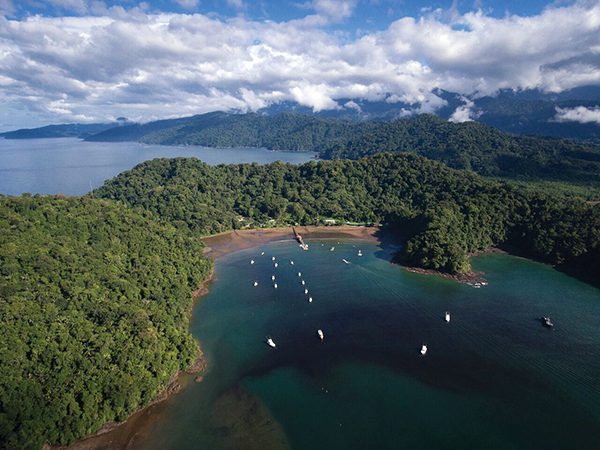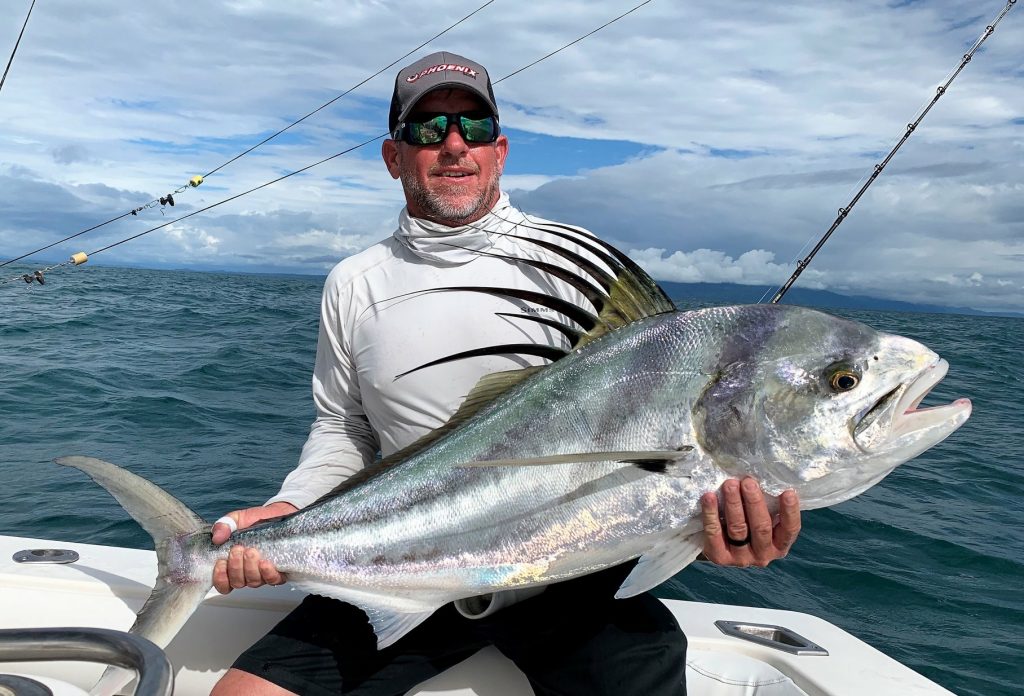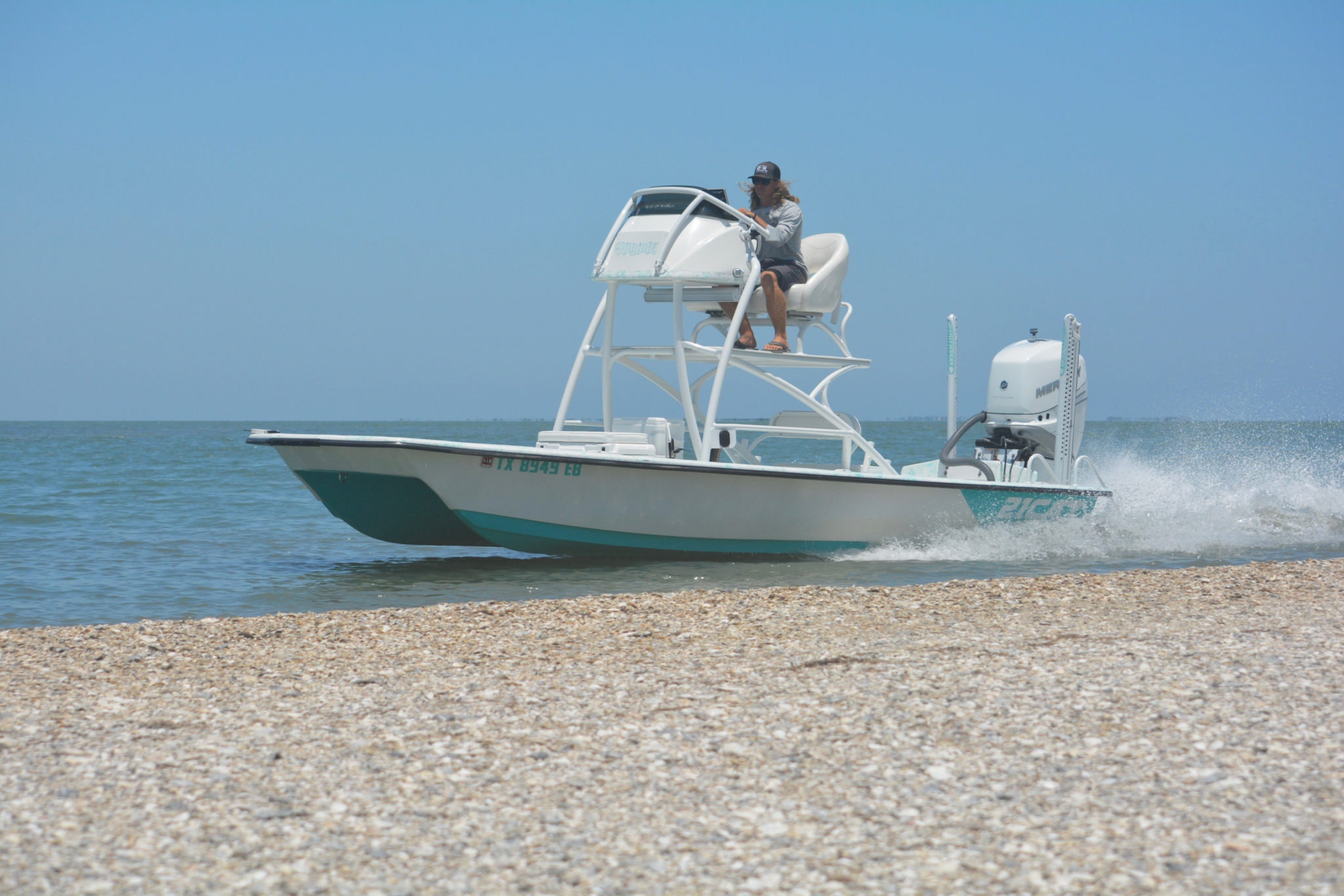
©Los Sueños Resort and Marina • Photographer: Pepper Ailor.
Los Sueños Resort and Marina, located at Playa Herradura on Costa Rica’s Central Pacific Coast, held the first leg of its sixth annual Los Sueños Signature Triple Crown billfish series, presented by Chantilly Air, January 16-19, 2019.
A total of 44 of the world’s most competitive billfishing teams comprised of 210 individual anglers challenged each other over three days of fishing, releasing a total of 648 billfish, including 582 sails and 66 marlin for a per boat average of 15 billfish releases.

Fish Tank, owned by Chris and Laura Jessen and captained by Ben Horning, took first place in both the Ladies Only Tournament and the Los Sueños Signature Triple Crown. ©Los Sueños Resort and Marina • Photographer: Pepper Ailor.
LADIES ONLY ONE-DAY TOURNAMENT
Held on Tuesday, Jan. 15, the first annual Los Sueños Ladies Only Tournament, presented by Chantilly Air and sponsored by Maverick and Galati Yacht Sales, brought together 49 individual anglers participating on 17 boats. It seemed like a clear battle between Family and Friends and D.A. Sea who were tied both for points and on time just half an hour before lines out.
Fish Tank (anglers Laura Jessen and Michelle Keeney) surprised everyone though, calling in a marlin hook up which they went on to release at 4:04 p.m. for the win, having released 8 sails and 1 marlin for 1,300 points. D.A. Sea (anglers Valerie Dunn, Susan McCart, and Judy Duffie) ended up second with 1100 points with 6 sailfish and 1 marlin release, and Family and Friends (anglers Jackie Kopp, Kristin Feller, and Andrea White) rounded out the leaderboard in third with 1,000 points after releasing 10 sails.
Awards were presented the following day and the ladies took to the stage to receive their cash prizes and trophies, sponsored by Gray Taxidermy. A total of $27,500 was handed out, 50% going to first, 30% to second, and 20% to third. Individual angler points follow the ladies through the Triple Crown and will be tallied to their total scores from that event to determine the Top Female Angler Overall. So far, Jackie Kopp of Family and Friends is well in the lead with 700 points from the Ladies Only and 1,500 points from the first leg of the Triple Crown.

©Los Sueños Resort and Marina • Photographer: Pepper Ailor.
TRIPLE CROWN DAY 1
It was Numero Uno who fittingly released fish “numero uno” of the tournament at 8:05 am on Day 1, Jan. 17. By 10 a.m., the competitive fleet of 44 teams and 210 anglers had released 89 billfish, including 84 sails and 5 marlin. Tarheel took an early lead with 800 points, over The King and I and Blue Eagle, each with 700 points. The King and I showed their stripes early with 1,800 points by noon, taking a 600 point lead over Tranquilo with 1,200 points and Outlaw with 1,100 points.
Over 40 fish were released in the next two hours, but the leaderboard changed very little. The King and I ended the day in first with 2,000 points, Wire We Here ended up releasing 6 sails and 2 marlin for 1,600 points and second place, and Blue Eagle released the same fish for the same points, just 13 minutes later to take third for the day.
TRIPLE CROWN DAY 2
The King and I had a slow start to Day 2 with zero releases by 10 a.m., but managed to hold on to their first place spot. Wire We Here released four sails in the same period to tie The King and I with 2,000 points, just one sailfish release and 100 points ahead of Reel Pushy. By noon the fleet had released a two-day total of 380 billfish and Fish Tank had pushed The King and I down to third on time after Wire We Here, both with 2,100 points, and taking top spot with 2,300 points. Family and Friends were keeping their name in front of spectators, taking top spot with 2,600 points by 2 p.m., followed by Fish Tank with 2,400 points and Reel Pushy in third with 2,300 points. By the end of the day Family and Friends had earned enough points after releasing 7 sails and 2 marlin for a two-day total of 2,600 points, to keep their first place position. Reel Pushy released 7 sails and 2 marlin on Day 2 for a two-day total of 2,500 points, and Fish Tank rounded out the top three with 2,400 points after releasing 9 sails on Day 2. The top nine teams were all within one marlin and one sail of the lead going in to Day 3.
TRIPLE CROWN DAY 3
Day 3 followed the same trend as the first two days with a good morning bite. By 10 a.m. the fleet had released 61 billfish for a three-day total of 522 billfish (469 sails and 53 marlin). The King and I were vying for the leaderboard and had amassed 3,300 points to take first over Reel Pushy in second with 3,100 points, and Tranquilo in third with 2,800 points. At noon it was still anyone’s game. Fish Tank was in first with 3,500 points. The King and I was in second, now with 3,400 points, and Reel Pushy in third with one more sailfish for 3,200 points. The 2 p.m. leaderboard would end up being a prediction of the Leg 1 finishers, showing Fish Tank in first with 4,200 points, The King and I in second with 3,400 points, and Reel Pushy in third with 3,300 points. Fish Tank went on to release four more sails, ending the day – and the tournament – with 4,600 points.
RESULTS
Los Sueños Ladies Only Tournament
1st Place: FISH TANK
Fish Tank, a 63’ Hatteras captained by Ben Horning, with anglers Laura Jessen and Michelle Keeney. Michelle was the top angler for this event, with 900 individual points after releasing 4 sails and 1 marlin.
2nd Place: D.A. SEA
D.A. Sea, a 60’ Viking captained by Climaco Rodriguez, with anglers Valerie Dunn, Susan McCart, and Judy Duffie.
3rd Place: FAMILY AND FRIENDS
Family and Friends, a 50’ Craig Blackwell captained by Joshua Porras, with anglers Jackie Kopp, Kristin Feller, and Andrea White
Los Sueños Signature Triple Crown
1st Place: FISH TANK
4,600 points, 31 sails and 3 marlin
Fish Tank, a 63’ Hatteras captained by Ben Horning, with owners/angler Chris and Laura Jessen, and their fellow anglers Kitt Toomey, Mike Ivancevic, and Darren Helwig. Fish Tank also took third place in Leg 1 of the 2016 Triple Crown and third place in Leg 3 2017. Laura Jessen is familiar with the stage, having also been the Top Female Angler in 2017.
TOP ANGLER
Chris Jessen of Fish Tank achieved the highest points out of all participating non-professional anglers after releasing 6 sailfish and 2 marlin for 1,600 points.
2nd Place: THE KING AND I
3,400 points, 9 sails and 5 marlin
The King and I, a 50’ Ocean Yacht, captained by Victor “Pia” Ceballos is from Guatemala and first started fishing the Triple Crown in 2018. Anglers Pablo Sechel, Sergio Alvarado, Juan Pablo Ramos, Juan Andres Morales and Charles Donato finished in second place in Leg 1.
3rd Place: REEL PUSHY
3,300 points, 18 sails and 3 marlin
Reel Pushy, a 58’ Monterey co-captained by Chris Workmon and Dave Dalfo also just started competing in the Triple Crown in 2018. This is their second year and angler/owner Robert Banker along with his fellow anglers Patrick Lanahan, Samantha Mumford, Tyler Wall, and Kevin O’Connor.
 ABOUT LOS SUEÑOS RESORT AND MARINA
ABOUT LOS SUEÑOS RESORT AND MARINA
Los Sueños Resort and Marina is the premier luxury real estate resort in Costa Rica. Nestled on the Central Pacific Coast, Los Sueños is an 1,100-acre oasis offering incredible ocean, rainforest and golf course view properties; a gorgeous waterfront Marina Village commercial area with restaurants, shops and lively entertainment; a large private beach club for residents; an 18-hole championship golf course; a superb 201-room Marriott Hotel; and much more, all within close proximity to world record-setting sport fishing waters. Information on Los Sueños Resort and Marina is available online at www.lossuenos.com. Information on Los Sueños real estate properties is available online at www.lossuenosproperties.com. For more photos from Los Sueños tournaments, please click here




 ABOUT LOS SUEÑOS RESORT AND MARINA
ABOUT LOS SUEÑOS RESORT AND MARINA
































 The rattling jig-head put in the hands of novice anglers had them out-catching their friends using a silent jig-head by a solid 5-1 ratio or better when fishing in the same boat or wade/kayak fishing the same area. That ratio has proven itself to be a consistent ratio over the last 15 years from actual reports from recreational and tournament anglers.
The rattling jig-head put in the hands of novice anglers had them out-catching their friends using a silent jig-head by a solid 5-1 ratio or better when fishing in the same boat or wade/kayak fishing the same area. That ratio has proven itself to be a consistent ratio over the last 15 years from actual reports from recreational and tournament anglers.






































